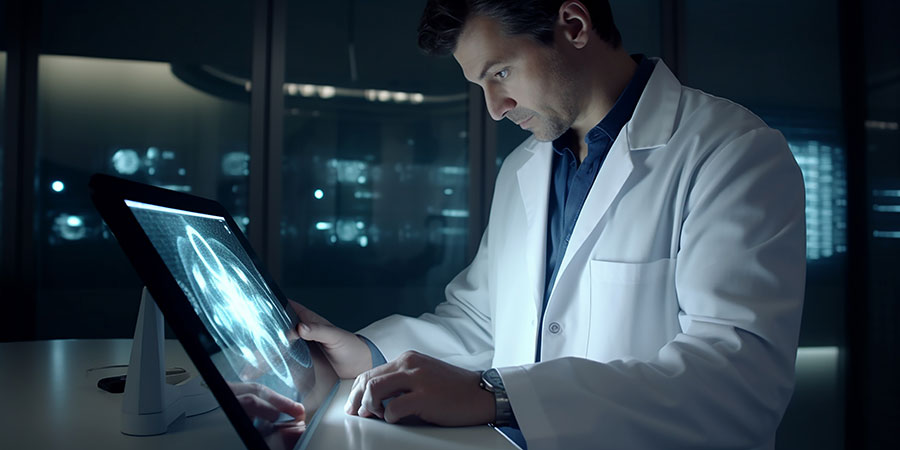What is Human Factor Engineering in Medical Terms?
17-Dec-2024
Human Factors Engineering in Medical Device Design focuses on the interactions between people and devices. Understanding the user-device system requires understanding how humans perceive information from the device, interpret the data, make judgments about what to do, and manipulate the device, its components, and controls. (for example, change a setting, replace a component, or turn off the device). It's also crucial to understand how gadgets receive user input and then respond and provide feedback on the implications of their activities.
The user-device interface is designed using human factors or usability engineering. The user interface encompasses all components with which users interact, whether preparing the device for use (e.g., unboxing, setting up, calibrating), using the device, or performing maintenance (e.g., cleaning, battery replacement, repair).
Human factors engineering is the discipline that attempts to identify and address these issues. It is the discipline that considers human strengths and limitations in the design of interactive systems that involve people, tools, technology, and work environments to ensure safety, effectiveness, and ease of use. The physical demands, skill demands, mental workload, team dynamics, aspects of the work environment (such as sufficient lighting, minimal noise, or other distractions), and device design necessary to accomplish the task optimally are all evaluated by a human factors engineer after breaking down a given activity into its component tasks. Essentially, human factors engineering aims to design systems that maximize safety and reduce the chance of error in complicated contexts by examining how systems function in real-world settings with genuine, flawed humans at the controls.
Outside of the medical field, human factors engineering has long been used to increase safety in a variety of industries. For example, it has been used to examine mistakes made in cars, airplanes, and the Three Mile Island nuclear power plant accident. Its use in healthcare is relatively new; the redesign of anesthesia equipment has decreased the risk of harm or death in the operating room, thanks in large part to groundbreaking research on human factors in anesthesia.
Key Principles of Human Factors Engineering in Medical Device Design
To guarantee that the design reduces the possibility of mistakes and damage, the FDA has set rules for human factors engineering in medical devices. These contain suggestions for ergonomics, usability testing, and other human factors factors. The FDA has released the following particular guidelines about human factors engineering in medical devices
- The device design should require use in a manner that minimizes the risk of errors and injuries.
- The device testing should be with representative users to ensure that it is easy to use, learn, and remember.
- The device should fit the user's physical and cognitive abilities.
- The device's user interface should minimize the risk of errors and maximize the user's understanding of the device.
- The device's color and contrast should enhance its usability and safety.
- The device's lighting should maximize visibility and minimize glare.
- The device should have appropriate auditory and visual warnings to alert the user to potential risks
These are but a handful of the FDA's human factors engineering guidelines. Depending on its features and intended use, your medical equipment can need more or less. When you submit your medical device to the FDA for evaluation, you must show that you have taken into account all pertinent variables, regardless of how many or how few standards you follow
To sum up, getting FDA approval for your medical device requires integrating human factors engineering. Additionally, you can create a gadget that is both safe and effective by optimizing the user-device interaction. Human factors engineering contributes to the safety, efficacy, and user happiness of devices by optimizing the interaction between the device and the user
To sum up, getting FDA approval for your medical device requires integrating human factors engineering. Additionally, you can create a gadget that is both safe and effective by optimizing the user-device interaction. Human factors engineering contributes to the safety, efficacy, and user happiness of devices by optimizing the interaction between the device and the user. Human Factors Engineering in Medical Device Design is a vital approach for ensuring that devices are user-friendly, safe, and effective. By focusing on the interaction between humans and technology, HFE minimizes errors, enhances the user experience, and ensures compliance with regulatory standards. As the medical field continues to evolve, the integration of HFE principles in device design will remain essential in advancing patient care and safety.
Recent Posts

Impact of 2024 HCPCS Updates on Healthcare Providers
16-Aug-2024
The 2024 Guide to Employee Motivation
21-Aug-2024
7 Ways to Improve Performance Management at Your Company
23-Aug-2024
Choosing the Best HR Tool for Education: 5 Things You Need to Know
28-Aug-2024
Payroll Records: A Guide to Retention and Disposal
04-Sep-2024
AI Limitations Why Certain Jobs Will Always Require a Human Touch
09-Sep-2024
How the New HIPAA Rules Impact Reproductive Health Care Providers
13-Sep-2024
Best Strategies to Manage Toxic Employees and Boost Team Morale
20-Sep-2024
Top 7 Common Coding Errors That Trigger Audits and How to Prevent Them
26-Sep-2024
How OSHA is Involved in Mandating Protections for Employees
14-Oct-2024
FDA Software Classification Guidance
22-Oct-2024
Stay Ahead of FDA Inspections: Best Practices for Managing Form 483 Citations and Warning Letters
24-Oct-2024
Best Practices to Reduce Validation Effort and Costs
06-Nov-2024
Best Practices for Medical Device Software Validation and Risk Management
14-Nov-2024
Training Strategies to Comply with EEOC New Harassment Standards
14-Nov-2024
Guideline On Computerized Systems and Electronic Data in Clinical Trials
17-Dec-2024
What is Human Factor Engineering in Medical Terms?
17-Dec-2024
What is the Objective of Supervisor Training?
24-Dec-2024



